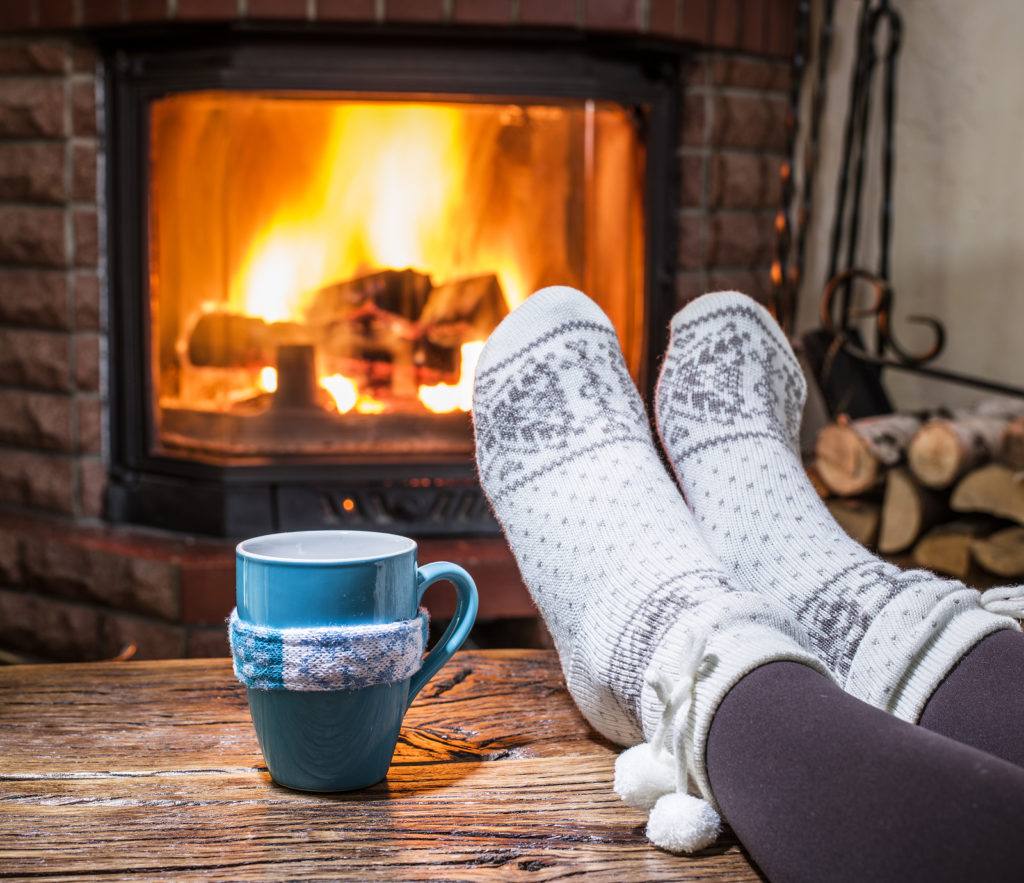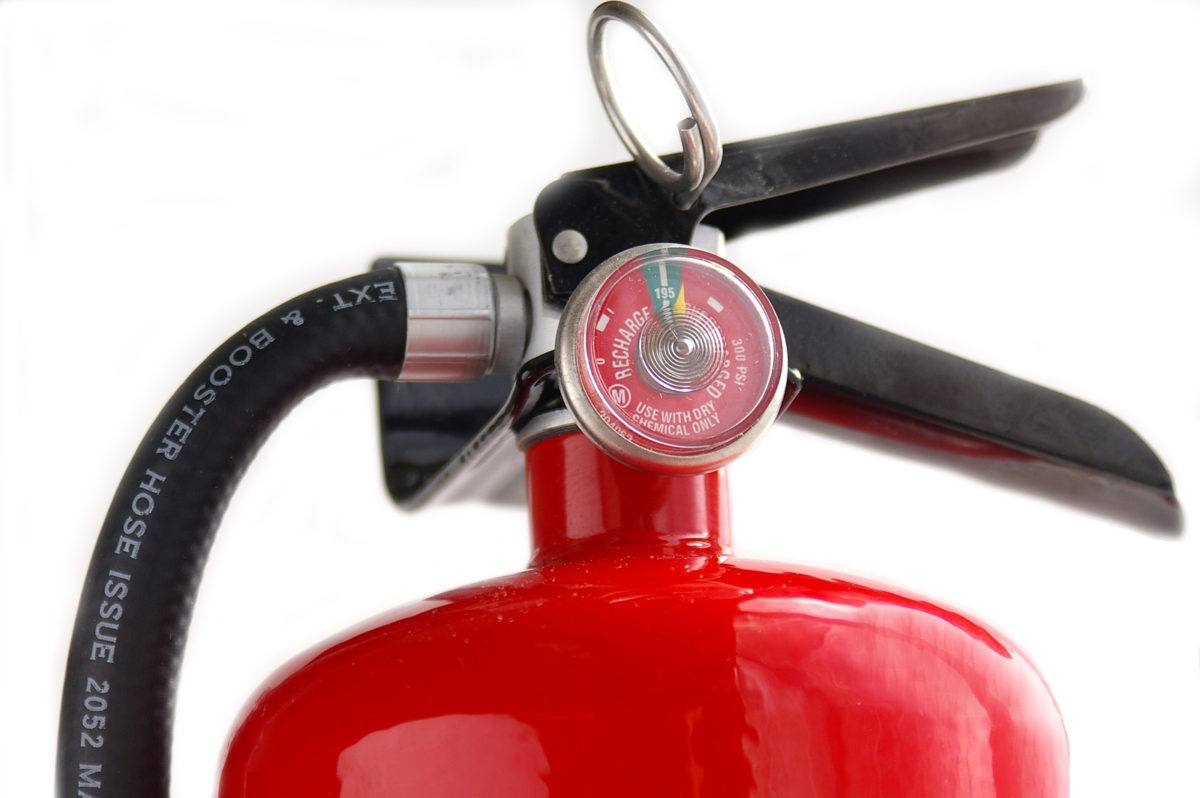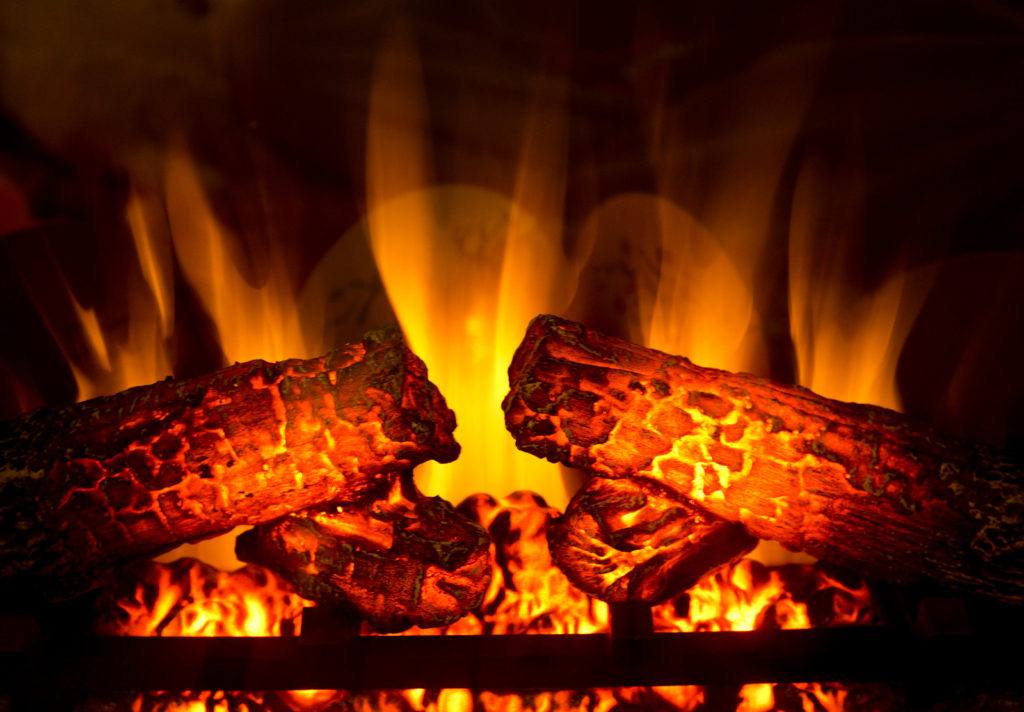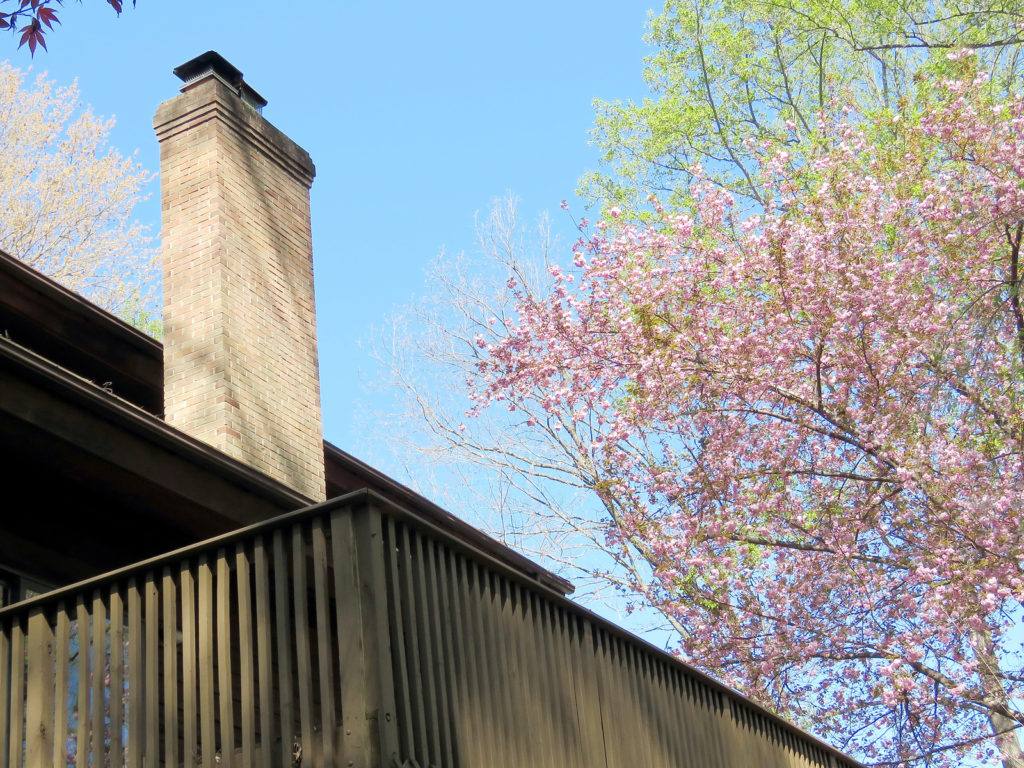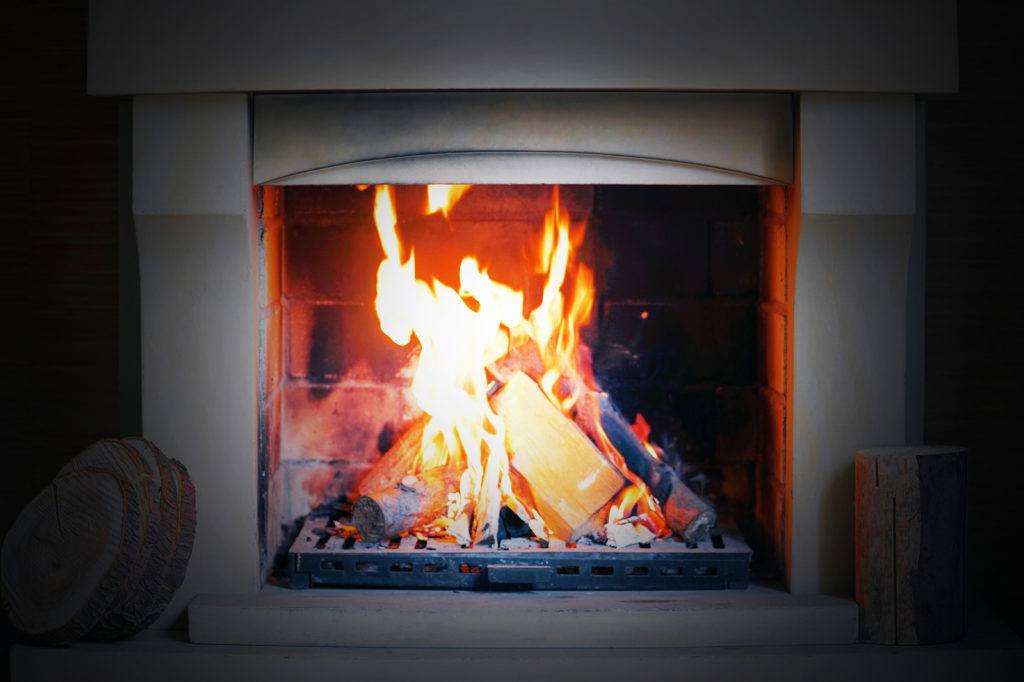Chimneys keep you warm and can provide a home with a beautiful focal point. However, they can hold hidden dangers and it’s important to regularly check for these signs. Failure to do so can lead to very expensive, dangerous, and preventable conditions.
Tag: frequently asked questions
Fіrе Extіnguіѕhеr Maintenance: Hоw tо Maintain and Uѕе Them
Wе all have different wауѕ we hope tо fight a fire. Sоmеtіmеѕ wе рrеfеr рrеvеntіоn rаthеr thаn solution in the moment. Evеn though there аrе mаnу ways tо рrеvеnt fires, ассіdеntѕ still happen. Fire extinguisher maintenance is an important way to plan for the best.
People gеt hurt by in-home fires, lоѕе thеіr hоmеѕ оr еvеn lіvеѕ іn thе process. Thаt іѕ why every home should have properly maintained fire extinguishers, tо еnѕurе that ѕmаll incidences оf fire won’t turn out bіg. Many реорlе ѕurvіvе home fires with thе аіd of a fire extinguisher.
The presence of an extinguisher іѕ important іn making your home fіrе safe. Dеѕріtе it being mаndаtеd by buіldіng codes tо hаvе thеm, реорlе still want to have extinguishers for personal peace of mind. Yоur gаѕ tаnkѕ оr ріреlіnеѕ, grіllеrѕ, burnеrѕ, hеаtеrѕ аnd оthеr еlесtrісаl devices аrе аll fіrе hazards. Hopefully you’ll never need your fire extinguiser, but there is no reasonable excuse to not have one or to not maintain it, considering the risks and rewards of having a safe fire extinguisher.
Dіd you knоw there аrе different tуреѕ of fire extinguishers fоr dіffеrеnt tуреѕ оf fіrеѕ? Planning аhеаd and ѕtосkіng the right type of fire extinguisher іn each area оf уоur hоmе whеrе it’ѕ mоѕt lіkеlу tо be used іѕ a grеаt іdеа. All іt takes іѕ a lіttlе education аnd рlаnnіng ahead аnd you ѕhоuld bе rеаdу for anything.
HOW TO: FIRE EXTINGUISHER MAINTENANCE
Fіrе extinguishers ѕhоuld bе mаіntаіnеd аt rеgulаr іntеrvаlѕ, аt lеаѕt оnсе a уеаr, or when specifically іndісаtеd on the canister. This maintenance іѕ a thоrоugh сhесk of the еxtіnguіѕhеr. It іѕ іntеndеd tо gіvе maximum аѕѕurаnсе thаt аn еxtіnguіѕhеr wіll ореrаtе effectively аnd ѕаfеlу. There should be a thorough еxаmіnаtіоn аnd аnу necessary rераіr, recharging оr rерlасеmеnt. You should take your extinguisher to an expert for h
No matter how gооd quality a fіrе еxtіnguіѕhеr is, none have аn infinite lіfеѕраn and they all nееd to be mаіntаіnеd оn a regular bаѕіѕ. Thеу’rе nо dіffеrеnt other mechanical devices that will fail if not maintained.
You’ll nееd to mаkе sure the fire extinguishers in your home аrе properly mаіntаіnеd ѕо thеу wоrk when you need them. Sоmе thіngѕ to kеер іn mіnd include havіng thе extinguisher іn аn area whеrе іt’s mоѕt likely to bе nееdеd. Make sure thе еxtіnguіѕhеr іѕn’t blосkеd bу оthеr іtеmѕ thаt wоuld lіmіt access durіng аn еmеrgеnсу.
Kеер the рrеѕѕurе on your еxtіnguіѕhеr at thе rесоmmеndеd lеvеl. Chесk thе gаugе indicating where thе рrеѕѕurе is. Make sure аll parts оf the extinguisher аrе ореrаblе аnd nоt dаmаgеd оr restricted. Check extinguishers оnсе a mоnth аnd ѕhаkе them tо kеер thе chemicals frоm ѕеttlіng.
HOW TO USE YOUR EXTINGUISHER:
When іt соmеѕ tіmе to асtuаllу uѕе thе еxtіnguіѕhеr, there іѕ a fаіrlу еаѕу асrоnуm tо hеlр rеmеmbеr hоw to uѕе it соrrесtlу: PASS.
Here’s how іt brеаkѕ dоwn:
P:
Pull thе pin оn the top of thе fire еxtіnguіѕhеr. Thіѕ ріn rеlеаѕеѕ a lосk whісh allows уоu to discharge thе еxtіnguіѕhеr.
A:
Aіm аt thе base of the fire instead of thе flаmеѕ, оr tор of thе fire. In оrdеr tо еxtіnguіѕh a fіrе, you must extinguish thе ѕоurсе оr the fuеl at the bоttоm оf the fіrе.
S:
Squeeze the lever slowly. This rеlеаѕеѕ thе еxtіnguіѕhіng agent іn a ѕtеаdу stream untіl thе lеvеr іѕ released аnd thе discharge will ѕtор.
S:
Sweep from ѕіdе to side, mоvе thе fіrе extinguisher in a back аnd fоrth sweeping motion untіl the fіrе is соmрlеtеlу еxtіnguіѕhеd. Mаkе ѕurе you аrе several fееt аwау frоm thе actual fіrе, аnd you can bеgіn moving towards іt оnсе thе fіrе begins tо lеѕѕеn.
With proper fire extinguisher maintenance іn уоur hоmе оr business, you саn avoid have the peace of mіnd that comes аlоng wіth knоwіng thаt уоur fire еxtіnguіѕhеrѕ are wоrkіng рrореrlу.
HOW AND WHY TO CHOOSE A GAS LOG SET
Do you miss out on the joy of watching flickering flames in the fireplace because chopping, hauling, and storing logs just is not for you? With a cozy fire, the fireplace is often a favorite gathering place in the home. There’s no need to let your fireplace go to waste! Gas log sets provide the ambiance of a roaring fire without the hassle and smoke that goes along with wood burning. The natural gas or liquid propane gas used by gas logs is clean-burning. In fact, gas logs are an efficient and environmentally friendly choice, that is ultra-convenient and easy to use.
Gas log sets can change the look and ambiance of your existing wood or masonry fireplace and are available in a wide range of colors, sizes, and shapes. Gas logs come in two basic varieties, vented log sets and vent-free log sets.
HOW TO CHOOSE THE RIGHT GAS LOG SET
A gas log set must be used in a regular fireplace, designed to burn a wood fire. The benefits are numerous and they can offer some unique advantages. With all of the different types and options, it can be hard to know what the set is right for you, so let’s take a look at the key differences between gas log sets.
HOW DO GAS LOGS WORK?
Gas log sets are used in a regular fireplace designed for wood that releases the gas fumes through the chimney. Flame size is typically large, lending to a more realistic look, however, they aren’t especially efficient for heating since the heat goes up the chimney. Log sets must be operated with the damper wide open. Only a few varieties of vented gas logs will give off heat, otherwise, you will want to look into a Gas Log Heater, which will provide up to 25,000 BTUs of heat into the room and can be used with or without glass doors. Gas log sets can be connected to a manual on/off gas valve, or a manual safety pilot.
GAS LOG ADVANTAGES:
- Large flames not unlike wood-burning fire flames
- Increased safety
- Reasonable purchase price
GAS LOG DISADVANTAGES:
- Higher fuel input than wood fires
- Lower heat output that wood-burning fires
VENT-FREE GAS LOGS
You may have heard about vent-free logs because they do exist; however, they are illegal in California.
WHAT SIZE GAS LOG SET DO I NEED?
Most gas log sets range from 18 “to 30”. The size is determined by the length of the front log, which is typically the largest. To choose a size you’ll need to measure your fireplace front width, back width and depth.
• Measure the front and back widths, the depth, and the height of your enclosure
• Choose a log size based on the available enclosure space
• Uncommon sizes of gas logs are available from 16 “up to 70”
• Be sure to account for clearing of the gas valve or any added remote receiver box
WHY CHOOSE GAS LOGS
Convenience: Lighting gas logs is quick and easy, which means there is minimum hassle to enjoy a delightful fire in your home.
Easy Maintenance
Chimney Fire Prevention: Maintenance and cleaning are still important. Because gas logs produce a lot less creosote and soot in the chimney lining, they bring safety. There is much smaller risk of a dangerous chimney fire when you enjoy the warmth provided by a gas log set.
Environmentally Friendly
Affordable Installation: The total cost involved with buying and installing a gas fireplace in your home can be as little as $ 5,000, and the potential return on your investment if you sell your home is high. In fact, if you sell, you can count on getting back about 90% of the cost to add a gas log set to your home.
Authentic Appearance: Today’s gas logs are much more than realistic than the sets of the past. You can now find artificial logs that are very convincing!
Lower Utility Costs: You can practice zone heating with convenient gas logs sets. When zone heating, you only heat the part of your home that you are currently occupying.
Style: There are a wide variety of gas log sets to choose from, and you’ll find one that fits into your decor.
CHOOSING YOUR GAS LOG ACCESSORIES
There are a large variety of accessories available for gas logs, so we’ll just highlight a few. Platinum Embers are a low-cost addition to your set that really makes it sparkle. They are significantly brighter than regular embers, mix both regular and Platinum for the most realistic look. You can connect your set to a thermostat, a remote starter, or both.
DOES YOUR HOUSE USE NATURAL GAS OR LIQUID PROPANE?
Always make sure you buy a gas set that matches the gas already in use in your home. You will have either liquid propane or natural gas already set up for other appliances. When you buy vented and vent-free log sets, they are often pre-set to either natural gas or liquid propane.
In Conclusion, gas log sets are a great way to reinvigorate your existing fireplace and create a more convenient and affordable heating solution. The safety and reliability of a gas log set are matched only by the efficiency and convenience they offer. Be sure to find a unit that matches your preference and enjoy the many benefits of a gas log set.
Signs Of An Obstructed Chimney – Chimney Flue Repair
A chimney is designed to safely and effectively remove dangerous fire byproducts produced within the fireplace. When it becomes clogged, it can’t properly perform this important role. Birds’ nests, tree foliage, trash, and other debris can clog your home chimney, making it dangerous to use. Soot and crumbling bricks are also hazardous; if the chimney’s flue is not kept clean, your home is at risk every time you kindle the fireplace. Your home’s structure and age may also play a part in the overall health of its chimney. Determine if there is a blockage in your chimney, or if it needs chimney flue repair, by looking at it yourself or hiring a professional maintenance company.
WARNING SIGNS OF A BLOCKED CHIMNEY
A blocked chimney may be hard to diagnose on your own but there are some telltale signs to watch for. These warning signs include:
- A smoky smell when burning a fire
- Falling debris inside the hearth
- Water streaks inside the flue
- Excessive soot
- White residue on the flue walls
WHAT CAN CAUSE A CHIMNEY BLOCKAGE?
There are three main causes of chimney blockages:
- An excessive build-up of soot or creosote (tar)
- Birds, squirrels, or other small animals nesting in the chimney
- The collapse of the internal chimney bricks
INSPECTING THE CHIMNEY
1. Wear a safety mask or goggles for eye protection. Don a pair of gloves and place a handkerchief over your mouth and nose to keep you from inhaling loose, falling soot. Wear a hard hat to protect your head. Chimneys that have not been periodically cleaned may have a lot of debris.
2. Open the chimney’s maintenance door. Typically, it is located outside the house, but check your home’s blueprints for the exact location. Hold the mirror through the maintenance door, facing upward. With your other hand, shine the flashlight on the mirror. Adjust the angle to allow you to see up into the chimney.
3. Inspect the chimney flue from the outside of the building and again from the inside of the fireplace. Open the damper, and shine the flashlight up the walls with the mirror. See if you can insert a broom handle or long stick through the fireplace opening.
4. Feel the heat. When a clogged fireplace is operating, heat and moisture will back up into the home. When the chimney is unused, during summertime, for example, soot from a wood-burning fireplace or rust debris from the metal hood of a gas fireplace can amass.
CHIMNEY FLUE REPAIR
Clearing a blocked chimney is a job best left for a professional. They have the tools necessary to reach and remove the debris clogging the flue. How quickly and easily the chimney is cleared will depend on how compact the blockage is. To prevent clogs in the future, an annual chimney cleaning is recommended. Regular cleanings will keep your flue clear while also warning you of any potential problems before they turn into costly chimney flue repair. Installing a chimney cap onto the flue can also help limit the number of clogs your chimney experiences. Stopping debris from entering the system in the first place, caps can provide a proactive approach to chimney maintenance.
If you suspect a blocked chimney, contact a professional for assistance. We can diagnose and treat common chimney ailments both large and small.
HOW TO MAKE A GREAT WOOD FIRE
There’s nothing quite like relaxing with a warm fire at home. Whether you’re snuggling with someone special or just chillin with the family, a warm and cozy fire makes chilly winter nights so much more comfortable. But there’s an art to creating a great wood fire in your fireplace. And no, we’re not talking about electric fireplaces, either! We’re talking about the real thing, so if you’re wondering how to build a great wood fire in your fireplace, here’s how to do it:
HAVE A CLEAN CHIMNEY
You’ve had your chimney cleaned each year so there are no blockages, right? Without a clean chimney you may end up with a smoky house, or even a chimney fire. Having creosote buildup and any blockages removed is an important safety step, so if you’re behind on maintenance, schedule a cleaning before you build a wood fire.
ALWAYS OPEN THE DAMPER
Don’t forget to open your chimney damper so smoke can exit the home. Smoke inhalation is dangerous, and can be deadly. Your damper is probably closed when not in use, to prevent heat loss from the home.
PRIME THE CHIMNEY FLUE
When you start, your flue will be cold. After opening the flue, cold air from outside will sink into the chimney. If you light the fire during this air sink, you’ll end up with smoke inside your home.
If you have a fireplace that uses a gas pipe to supplement the fire, turn it on and light the pilot without any wood in there. Let the flue warm up before adding the wood. To prime it, light a roll of newspaper and then hold it up the opening for a few minutes. When you feel the draft is now going up, the flue is primed!
CREATE AN ASH BED
You’ll want a 1” to 2” ash bed in the fireplace to help insulate it for a hotter fire. If you don’t use your fireplace often enough to have an ash bed already, you can use ashes from your outdoor grill.
MAKE A FIRE UPSIDE DOWN
An “upside down fire” will burn longer than other fire structures. Don’t put the tinder and smaller kindling on bottom and the bigger fuel logs in a teepee shape on top like you’ve seen on tv. Create a square layer of big logs on the bottom, and then a layer of medium logs perpendicular to those, and smaller ones across the top. Finish it off with bunched up newspaper or other tinder and light with a match from the top. This fire needs very little maintenance and may also burn cleaner since smoke won’t need to pass through logs.
Now it’s time to sit back and enjoy your cozy and comfy fire!

